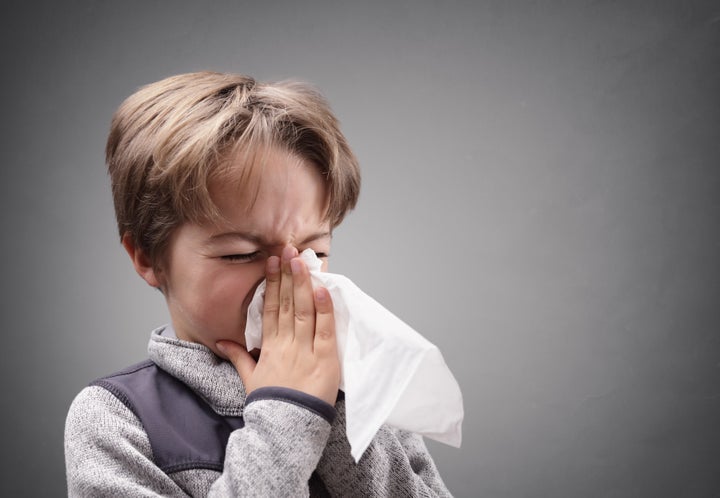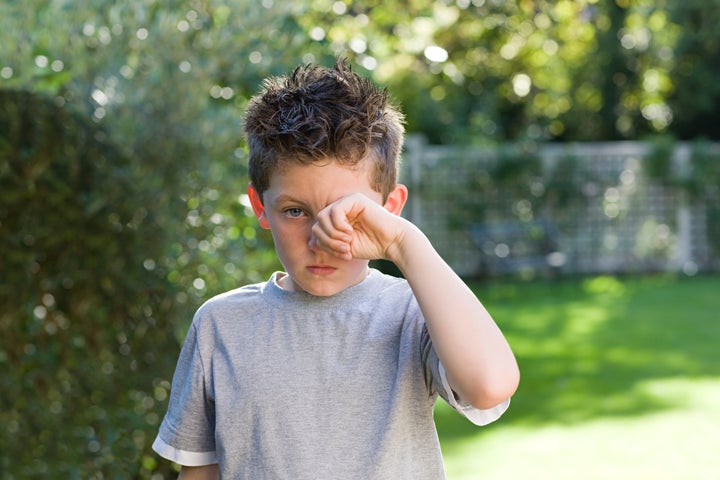Almost one in 12 young children suffer from a food allergy, according to Allergy UK, but not all parents are able to recognise the symptoms.
“Food allergy is probably one of the most worrying forms of allergic disease in children,” Allergy UK nurse advisor, Holly Shaw, told HuffPost UK.
“Severe reactions are very rare in young children and tend to be more of a problem amongst teenagers.”

We chatted to Shaw about the most common childhood allergies and what symptoms parents should be looking out for.
What are the most common childhood food allergies?
More than 90% of mediated food allergies (those which stem from the immune system) in children are caused by just eight core foods, Shaw said.
These are cow’s milk, soy, hen’s eggs, peanuts, tree nuts (including walnut, almond, hazelnut, cashew, pistachio, and Brazil nuts), wheat, fish and shellfish.
“It is interesting to note that the foods causing allergy in children are different to those in adults,” Shaw explained.
“Adults are more at risk of shellfish or allergy to medication.
“Egg allergy is a common food allergy in children and is usually identified in the first year of life, when egg is introduced into an infant’s diet.
“The most common egg allergens are found in the egg white, although it is possible to be allergic to the egg yolk too.
“Interestingly some children are able to tolerate baked egg (for example in a cake) but cannot tolerate egg in looser forms, such as scrambled, as the heating process changes the way the individual’s immune system recognises the protein.”
The second most common allergy in kids is cow’s milk.
“Infants and children who have an immediate allergy to cow’s milk produce antibodies that recognise the proteins in cow’s milk as a threat and mount an allergic response,” Shaw explained.
“Thankfully, many children grow out of this allergy by five years old.
“The majority of children with cow’s milk and egg allergy are able to tolerate these food groups by the time they reach school age.
“Allergies to peanuts and tree nuts tend to persist, and the likelihood of growing out of them is reduced.”

Are some children more prone to having food allergies?
“When a child is born to parents who have an existing allergic condition such as asthma, eczema, hay fever or a food allergy, there is an increased likelihood that the child will go on to develop an allergic condition also,” Shaw said.
“In the allergy world this is termed atopy.
“Children with asthma as well as a food allergy are at an increased risk of suffering a more severe form of allergic reaction.”
What signs or symptoms should I look out for as a parent?
Shaw said symptoms of common allergies are usually specific to the individual and dependent upon several factors.
“Some people may have just one sign, for example swelling to the lips, while another person may have several, for example swelling to the lips, a rash and then vomit,” she explained.
″An allergic reaction may be mild, moderate or severe, with the most severe type being anaphylaxis.
″It also may be influenced by the type and quantity of food consumed.”
Mild to moderate symptoms include:
- Hives or itchy skin rash
- Swelling of the eyes, lips and face (angio-oedema)
- Tingling/itchy mouth
- Abdominal pain or vomiting
- Sudden change in behaviour
Severe symptoms:
- Persistent cough
- Hoarse voice
- Difficulty swallowing
- Swollen tongue
- Difficult or noisy breathing
- Wheeze or persistent cough
- Persistent dizziness
- Pale or floppy
- Suddenly sleepy
- Collapse/Lose consciousness
“If a child has symptoms suggestive of a food allergy after eating any food it is important to seek medical advice immediately,” Shaw urged.
“Keeping a food and symptoms diary may assist the GP in making a diagnosis.”